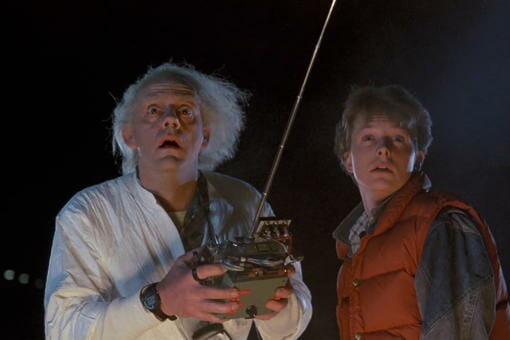By V. Prasad · March 5, 2012

If you’ve studied screenwriting even a little, you know that writers generally talk about stories as having three Acts with a turning point at the end of Act One and Act Two. (Usually, they also include a “Midpoint” turning point in the middle of Act Two.) But, how do turning points work? How do they “turn” the story?
Well, the direction of the story is dictated by what the main character wants. They take actions to get it and whether or not they will is what engages the audience in the short term. So, if you want to turn the story, you have to change what the character wants. You can even think of story structure as how the main character’s “want” changes over the course of the story.
There are two “events” that can cause that change: an action or a revelation. Something someone does or something someone learns can cause the story to turn in a new direction.
And these two kinds of events can alter the goal that drives the story in three different ways:
Putting everything together, we can categorize turning points in six ways. Here are some examples:
1. An action leads to one goal being achieved and replaced by a tougher one:
At the midpoint of The Untouchables, Eliot Ness and his team bust an illegal alcohol shipment on the Canadian border and obtain a ledger that could be the key to convicting Al Capone on tax evasion (new goal). Their success is short-lived as their key witness is soon killed. The new goal will be tougher.
At the end of Act One of Legally Blond, Elle Woods succeeds in getting into Harvard Law School in order to win back her boyfriend. But, getting into Harvard will not be as tough as succeeding there.
Act Two of Star Wars ends with the successful escape from the Death Star. The goal in Act Three becomes “destroy the Death Star before it gets in range to destroy the rebel base.”
2. A revelation leads to one goal being achieved and replaced by a tougher one:
In Chinatown, when Jake Gittes finds out the horrifying motivations behind the murder he’s investigating, a new goal is formed. He has succeeded in solving the crime, but now he must protect two women from the murderer, a tougher task.
3. An action throws up a barrier and the character must take a drastically different tactic, strategy or approach:
At the midpoint of Little Miss Sunshine, a dysfunctional family drives across the Southwest to make it to Los Angeles in time for a beauty pageant the young girl wants to compete in. But, when her grandfather dies (action) during the trip and they are not allowed to leave and return for the body later, they are forced to sneak the body out of the hospital and continue their journey with a corpse in the back of their van.
4. The character realizes (revelation) they’re at an impasse and must take a drastically different tactic, strategy or approach:
At the end of Act One in Tootsie, after learning that (revelation) that no one will hire him, actor Michael Dorsey decides to dress up as a woman and get a female part on a soap opera. As a result, his new goal is to pass for a woman. He had met a barrier and was forced to do something drastic. Later at the end of Act Two, Michael finds out that the soap opera has extended his contract (revelation). So he must come up with a way to get out of it without being charged with fraud (new goal).
5. An action thrusts a character into a completely new situation:
In Back to the Future, a turning point occurs when Marty McFly, while trying to escape from Libyan terrorists, is forced to travel back in time. His goal from then on is to get “back to the future.” In this case, the story turns on an action that thrusts the character into a completely new situation.
Similarly, in Titanic, the iceberg that sinks the famous ship turns the story at the midpoint by creating something entirely new for the characters to deal with.
6. A character comes to the realization that he’s been thrust into a completely new situation:
In Groundhog Day, the first turning point occurs when the main character comes to the realization that he’s stuck in a loop, reliving the same day over and over again. This realization doesn’t come right away. He has to put the pieces together. When he does, the story turns on the actions he takes in response to being in this purgatory.
Similarly, in Liar Liar, a young boy makes a wish that his lawyer father be unable to tell a lie for one day. But, the turning point doesn’t occur until the lawyer finally figures out that, for reasons he’s unaware of, he can’t lie. Once he has that revelation, he can form a new goal.
At the midpoint of A Beautiful Mind and the end of Act Two of Fight Club, the characters realize that they suffer from psychological disorders.
So, when laying out your structure, think about what your character wants and how that changes over the course of the story.